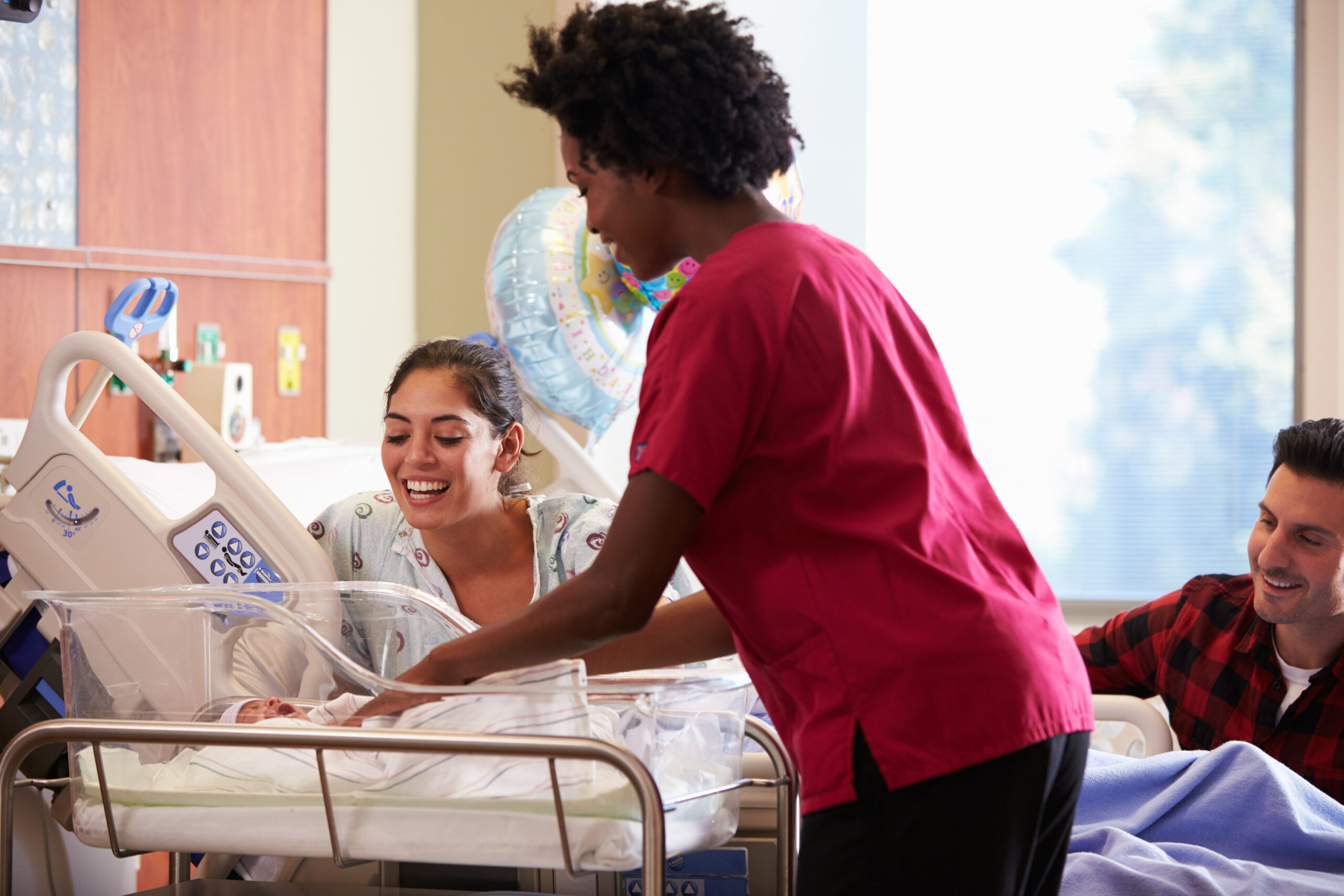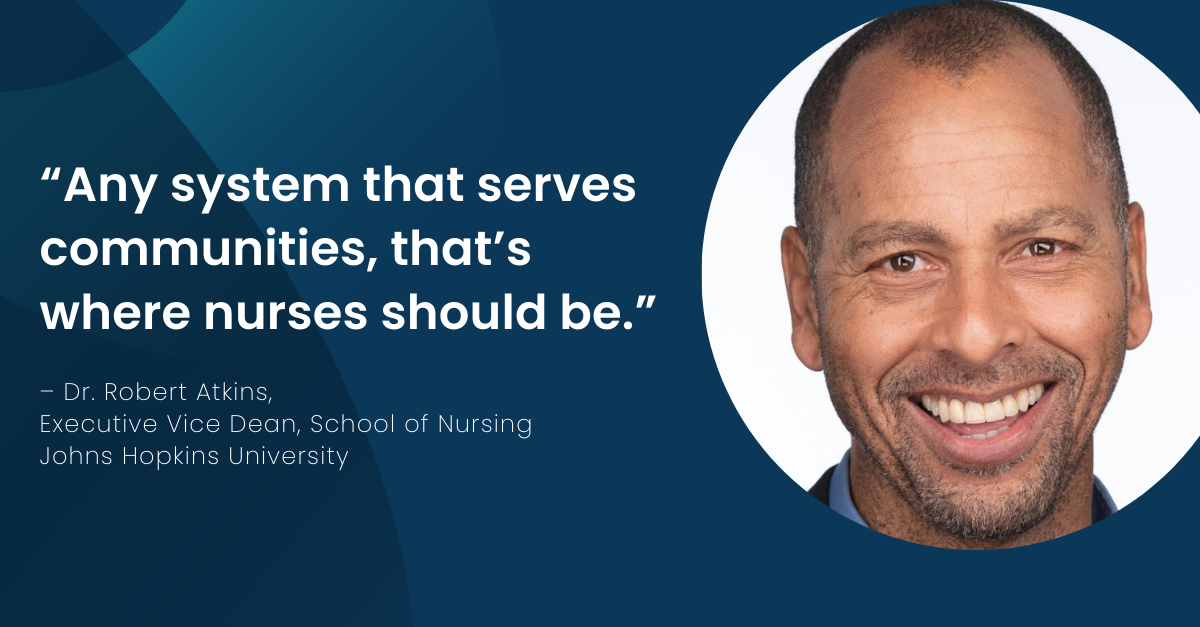
Yet the healthcare system often fails women — especially women of color. Many report having experiences that make them feel their concerns or symptoms aren’t taken seriously and that their providers treat them with less respect than other patients.
One part of the solution is to make expert, culturally congruent nurse care available to new mothers — which is starting to happen in New Jersey through the state-run FamilyConnects NJ program that provides free nurse visits to families of newborns. We’re proud of Burke’s contribution to bringing this evidence-based model to New Jersey, where it served more than 1,000 families in the pilot phase with great results. In the coming years, parents and caregivers of all the 100,000 babies born in the state will be eligible to receive this care.
Today, healthcare is increasingly provided by nurses, but there might not be enough of them. Federal authorities project there will be fewer than the 78,610 full-time RNs needed nationwide in 2025 and a 63,720 shortfall in 2030. New Jersey is among the 10 states with the largest projected nursing shortage in 2035.
This issue of Starting Early celebrates the value of nurses and examines who they are and what they need to thrive in today’s demanding healthcare environment. Don’t miss our interview with someone I deeply admire: Dr. Bob Atkins, executive vice dean of the School of Nursing at Johns Hopkins University, who is exploring new community models to increase the supply of nurses.
Atiya Weiss
Executive Director, the Burke Foundation
1 big thing: The nurse is essential

One proven way to address the healthcare crisis for expectant mothers is to increase their interactions with medical providers – and nurses are essential to meeting the increased demand for hands-on care.
People trust nurses: A 2024 Gallup poll found that 78% of Americans rated nurses’ honesty and ethical standards as “very high” or “high” — the highest ranking of any profession in the survey. That trust helps encourage moms to seek care.
Dig deeper: As crucial as nurses are to high-quality healthcare, the nursing workforce rarely aligns with the diversity of the patients in their care.
Only 17% of registered nurses are from a minority background vs. 37% of the U.S. population.
Just 25% of candidates enrolled in entry-level BSN degree programs are members of a racial or ethnic minority.
But 55% of mothers in New Jersey — and 50% nationwide — are non-white.
With Black mothers continuing to experience significantly higher rates of morbidity and mortality than white moms during and after pregnancy, the shift to culturally congruent care is seen as a critical contribution to good health.
The bottom line: Trust matters in healthcare.
A University of Minnesota study, through the Roots Community Birth Clinic, found that clients of color “reported feeling more autonomy and respect when they received culturally centered care when compared to participants in the national survey.”
Studies also show that Black patients are more likely to request preventive care when their physician is Black. In fact, under the care of Black physicians, there was a 58% reduction in the racial mortality difference in Black infants, according to a 2021 National Academy of Sciences report.
2. Bob Atkins tells us how community nursing changes lives

Dr. Robert Atkins, a former school nurse and nonprofit leader in Camden, NJ, is executive vice dean of the School of Nursing at Johns Hopkins University. He advocates for community-based nursing and is dedicated to increasing the participation of diverse nurses in the nursing workforce by creating new pathways for education and more affordable options for their education. Following is a condensed version of our conversation. The full interview is available here.
How did your experiences as a school nurse affect your career path?
The middle school kids I worked with were like those I’d grown up with in Cherry Hill, which is only a couple miles from Camden, but very different in terms of life chances. I got very interested in the lives of these kids and started a youth development nonprofit program with a professor from Rutgers, Dan Hart, which we ran for 20 years. I realized community-based nonprofits can make a huge difference in the lives of kids. It also made me focus on the barriers that impede kids growing up in Black and brown communities of great disinvestment like Camden. These barriers include lack of access to healthcare and dental care, food insecurity, and housing instability. There was a lot of absenteeism, and things like this really diminish life chances.
What brought you, most recently, to the Johns Hopkins School of Nursing?
Sarah Szanton, dean at the Johns Hopkins School of Nursing, has a vision for increasing the number of nurses working in the community [as opposed to hospitals or other clinical settings]. For me it was clear that to do that successfully we’d have to change our educational system to provide nurses with the skills to be effective and utilized in the community. Over the past almost 2 years we’ve thought about how to reimagine educational pathways so nurses can work in any setting where a nurse could serve the community. We’ll always need nurses in acute care systems. And we don’t want to rob Peter to pay Paul. We want to make a bigger [nursing] pie and have more of that pie go toward communities.
What convinces you that this is the right direction for nursing and what would a community nurse workforce look like?
Historically, nurses started in the community. We were in homes. We were in schools. We were in neighborhoods. As more hospitals were built, they needed nurses to provide bedside care and hospitals started nursing schools to provide staff for their hospitals. Colleges and universities now provide most of the nursing education in this country. However, they retained most of the architecture of the hospital-based nursing schools. We’re trying to reimagine a new architecture for nursing schools now.
Any system that serves communities, that’s where nurses should be. Everyone will have to deal with getting food, or housing, or education at some point. Wherever health resides, nurses should be there. We have to think broadly about health — so libraries, schools, public housing, or food banks are also good places for nurses.
Nursing schools will continue to teach what nurses need in terms of technical skills. But we must also give our graduates the confidence that they have everything they need to be successful in the community. Things like skill-building to be a community partner, how to lead thinking about what happens around health policy, or think more deeply about research and scholarship. We want nurses to think about the different systems they will encounter and how these systems all interconnect. That’s much more complicated than just the kind of the mechanical, technical skills typically provided.
What other steps are necessary to grow this workforce?
A lot of people want to be nurses — they just don’t know it yet. And we haven’t done a good job of communicating to them, “This is actually where you want to be. You would love to use your head and your heart and your hands every day.” Because that’s what nurses have the privilege of doing. And people want you in their communities, their homes, and schools because they trust you.
We need to change the narrative about nurses. Most people have the sense that nursing is only dealing with blood and other bodily fluids. That could be one part of it, but what they don’t see is that you’re dealing with human beings and forming relationships through nursing.
We also have to create a pathway. We, in healthcare systems and universities, need to think about frontline healthcare workers, who are overwhelmingly Black and brown, and how to create a ladder for them to go from being frontline workers doing the backbreaking part of healthcare and giving them a pathway into nursing, as we did in a pilot program at Robert Wood Johnson Foundation. This is an equity issue. If you want to change somebody’s health, get them a job that pays $40 or $50 an hour instead of $10. That changes not only their life, but it also changes the lives of their family members, where they go to school, what kind of foods they eat.
We also need to make this nursing school enterprise more affordable. We turn away tens of thousands of qualified applicants, yet we have a nursing shortage. And part of it is because the way we’re set up doesn’t allow us to take as many students in as we should be able to take in. And some of it is because we have an old way of thinking — an old architecture that doesn’t serve where nursing should be in the 21st century.
3. Building a better, bigger pipeline

Ensuring an adequate supply of culturally congruent nurses requires new ways to find and develop nurses, and nursing education programs that fit the needs of diverse students.
Financial assistance is a huge need: Help paying tuition is one way many would-be nurses and other health professionals can reduce the cost of their education. Scholarship opportunities in nursing can help broaden the economic diversity of students.
Here are 4 programs designed to reduce the cost burden on nursing students:
Federal resources: The federal Health Resources & Services Administration offers scholarship and loan repayment programs for nurses who choose to work in critical-shortage facilities, substance abuse programs, and nursing schools.
New Jersey Pay it Forward: Students in this first-of-its-kind initiative in the nation receive zero-interest, no-fee loans with no upfront costs, as well as non-repayable living stipends and wraparound supports, to participate in the nursing program at Hudson County Community College. Repayment is capped at 5 years and is based on post-completion income.
Loan Repayment: New York State Nurses Across New York (NANY) trains and places RNs and LPNs in underserved communities and, in return, provides loan repayment in exchange for a nurse’s commitment to work in an underserved area for 3 years.
Indian Health Services: The IHS Loan Repayment Program offers repayment of eligible health profession education loans up to $50,000 in exchange for an initial 2-year service commitment to practice in health facilities serving American Indian and Alaska Native communities that have the greatest needs. Participants can extend their contracts for additional loan repayment support.
In addition to financial assistance, other approaches include:
Specialized education and clinical training in community nursing and midwifery.
Support Licensed Practical Nurses (LPNs), who need a high school diploma and specialized training, to pursue further education for higher-paying jobs that require Registered Nurse (RN) or Bachelor of Science in Nursing (BSN) degrees.
Recognize the number of students who are parents and provide them with child care and other support to improve chances of success.
Increase support for nursing students through mentorship and coaching.
In an interview with Minority Nurse, Elaina Hall, DNP encouraged the next generation of nurses:
“You are the heart and soul of healthcare, the guardians of healing, and the champions of hope…Your passion and dedication will transform lives and leave a lasting legacy.”
The roundup
Forging connections: Registration is open for the 2024 National Black Nurses Association Annual Conference.
Leading the way: DOC (DNPs of Color) hosts their annual conference in Philadelphia October 17-20. Register now.
Building capacity: On August 20, the Partnership for Maternal & Child Health of Northern New Jersey’s hosts “Supporting Lactation Through Barriers: Knowledge and Resources for Professionals,” in Secaucus. Registration is open now.
Looking local: Community-based solutions play a critical role in improving maternal and infant health, including creating opportunities for culturally congruent care from nurses and other professionals who are familiar with the needs of birthing people, according to a recent post from the Robert Wood Johnson Foundation.
